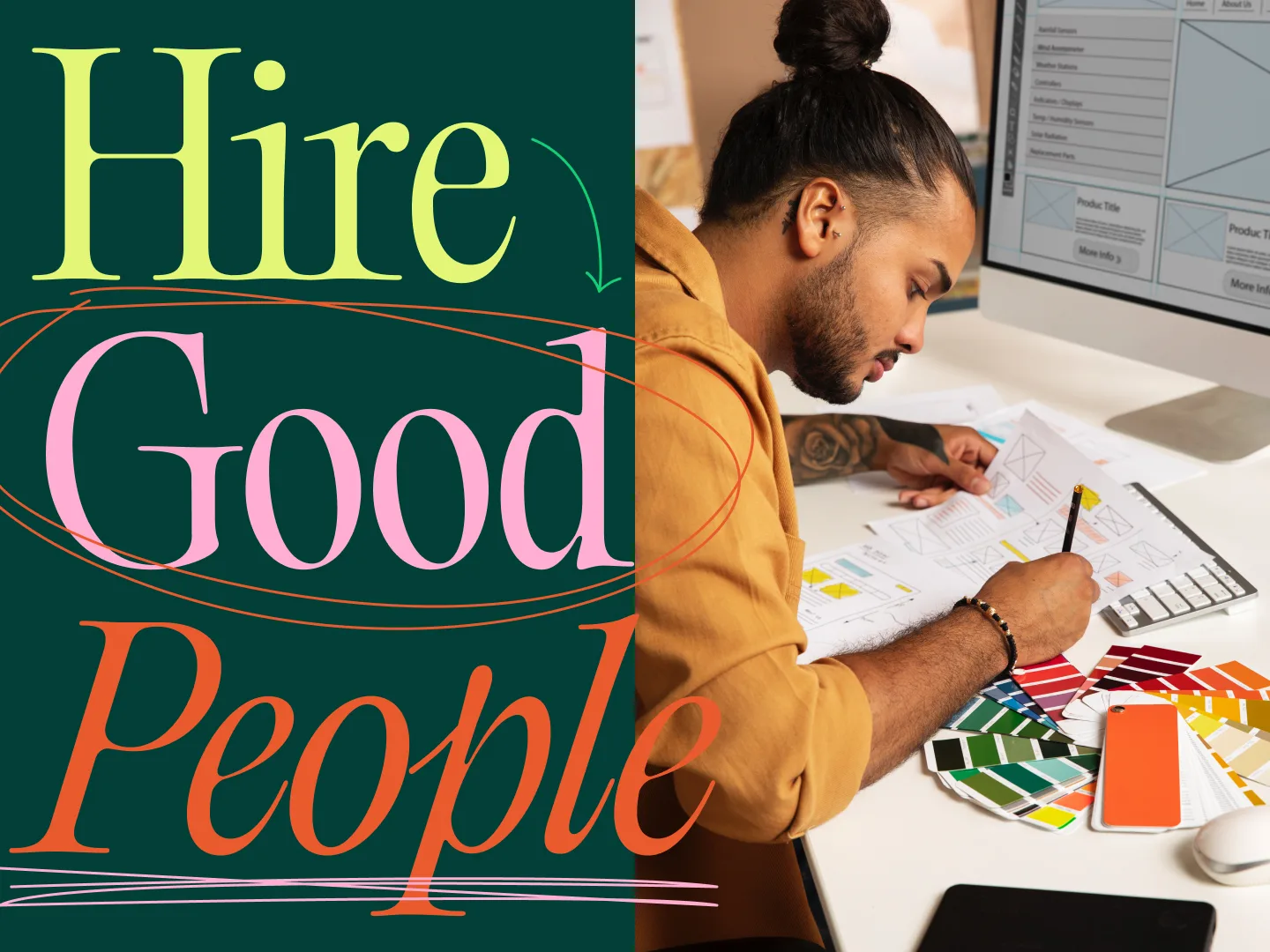
This blog first appeared on Dribbble Courtside.
So you need to hire a designer. Kudos! Whether you’re growing and you need to add staff, or you’re replacing an outgoing team member, you’re about to bring on someone new. This can be one of the most exciting—and anxiety-inducing—parts of running an agency, but it’s worth your time to really carefully consider how to go about conducting the addition.
After nearly a decade of reviewing portfolios, conducting interviews, and hiring designers, we’ve pretty much seen it all. We’ve made good hires and not-so-good hires, and worked hard to develop a process that results in more of the former and less of the latter. Our hiring process isn’t perfect, nor is it finished, but it’s come a long way since the early days, and for where we are in our business life cycle, it works really nicely. Considering both culture and capabilities, our team is stronger now than it’s ever been, a fact that’s largely attributable to our carefully developed approach to hiring. If you’re new to hiring designers, or just wondering what others are doing, we encourage you to learn from our experience—and mistakes—to develop your own hiring methodology. Here are the five most important lessons we’ve learned in nine years of adding legs to Tilted Chair.
#1 Know What You’re Hiring For
Tilted Chair is equal parts ad agency and branding firm. This means the nature of the work we do requires both art directors and designers, two related but ultimately different disciplines. And hiring a designer when what you need is an art director—or the opposite—can create some real issues in agency performance. We’ve made this mistake before, bringing on team members with strong conceptual skills but nascent comprehension of design techniques and principles only to discover the pipeline full of design-heavy projects. In a perfect world, we’d hire only art director/designer hybrids capable of tackling any assignment with aplomb. But such creative unicorns are few-and-far-between, and so you’re left to use your best judgment to match up your upcoming projects with the skillset of your potential candidate.
#2 Scrutinize the Details
In this business, just like any other, time is money. Translation: getting work in and out as efficiently as possible means better profitability, reduced stress on the agency and its staff, and better work output. And nothing slows down workflow like round after round of revisions—both internal and client-facing. Look closely at the work of potential designer candidates. Inspect working files. See how carefully the work is constructed, and see if your candidate sweats the details. A detail-oriented designer is worth their weight in gold because they require less oversight, and eliminate revision rounds. And a sloppy designer can create more work than they actually do.
#3 Screen for Skills and Culture; Hire for Culture
There are tons of talented designers out there. These days, being talented/skilled is the minimum barrier to consideration. But beyond up-leveling your agency’s work, how else will this person change your workplace? Tilted Chair is a boutique agency of 11 people, so if you think about it, the next time we add a team member, that’ll represent a 9% expansion of our staff. That’s a new variable that has the potential to change the cultural and team dynamics by 9%. The implications of this can’t be overstated. To address this, we ask qualitative questions during the interviewing process, including “Name the top 3 most interesting things you’ve seen in the ad industry this week,” “In your opinion, what are the top 3 WORST things agencies do?” and “What is your ideal work environment?” Great company cultures don’t just happen; they’re painstakingly created, and it takes great care to maintain them. Ask questions that will yield answers that can shed light on a candidate’s fitness for YOUR culture.
#4 Have a Plan for Your New Hire
At Tilted Chair, we invest in our people so they can improve their skills, knowledge, and expertise. We include in our employment packages funds dedicated to continuing education, equivalent to 3% of an employee’s annual salary. We also meet quarterly with our employees to review performance, and set goals for the next 90 days. In sum, we spend a great deal of time and money improving and reviewing employee performance. Why? Simply put, great people crave a vision for their careers, and figuring out a way to develop that plan before you make your next hire can make a world of difference in how long you retain them.
#5 Hire Slow, and Fire…Well, You Know
Nothing too surprising here. It takes a good amount of time to figure out exactly what you’re looking for, screen for cultural fit, and scrutinize the details. If one of your candidates has successfully navigated this gauntlet, odds are you’ve found a great fit for your agency. Unfortunately, that’s not always the case. When the indicators start rearing their ugly heads—lack of attention-to-detail, regular tardiness, poor attitude, or any other of the myriad issues that can indicate declining performance—it might be time to move on. And sooner rather than later. Things usually don’t get better, and the longer you hang on to a designer who’s no longer a good fit in your firm, the more you risk damaging morale, and driving away your good people. Your A employees may start to resent the presence of your B employees, and toxicity can very easily pervade your team dynamics. It’s never easy to let someone go, but for a truly poor fit, it’s generally the right thing to do, for everyone involved.
Conclusion
If great businesses, as Verne Harnish once said, are built around “the right people doing the right things right,” well then, you need to figure out how to attract the right people. The sooner you can find the right designer, the sooner you can get back to doing the thing you’re probably best at—growing your business. Good luck!
